A 20-year Finnish study revealed a staggering fact: regular heat sessions can slash all-cause mortality by 40%. This isn’t just about relaxation—it’s a science-backed strategy for a longer, healthier life.
When your body faces controlled heat stress, it triggers heat shock proteins (HSPs). These cellular repair agents combat aging and reduce inflammation, mimicking the effects of moderate exercise. The result? Enhanced cardiovascular function and slower cellular decline.
Brands like Salus Saunas engineer sessions to maximize these benefits. Sweating isn’t just cooling—it’s your body’s natural detox pathway, flushing toxins efficiently. Peer-reviewed research continues to uncover links between heat exposure and improved brain health.
Key Takeaways
- Regular heat exposure may reduce mortality risk by 40%
- Heat shock proteins activate cellular repair mechanisms
- Cardiovascular benefits rival moderate exercise
- Sweating aids natural toxin removal
- Chronic disease prevention shows promise in studies
Introduction to Sauna Therapy
For centuries, cultures worldwide have harnessed heat for its healing properties. Finnish traditions, Russian banyas, and Native American sweat lodges all share a common thread: using controlled heat to promote wellness. Today, this ancient practice evolves with cutting-edge technology like infrared saunas.
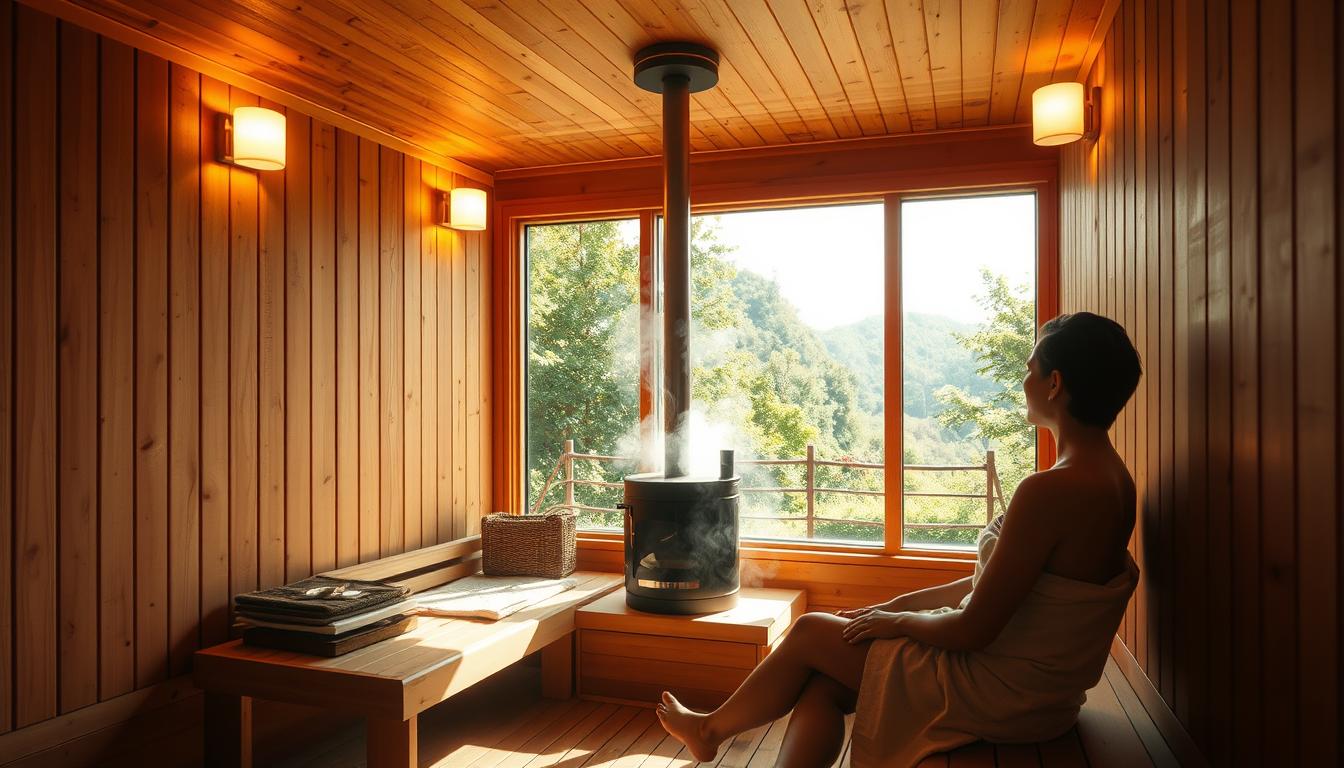
Modern sauna use typically exposes your body to 140–180°F heat. This triggers sweating, boosts circulation, and activates *cellular repair* processes. Brands like Salus Saunas offer precision-engineered options, from steam-filled traditional models to radiant infrared systems.
Infrared technology, pioneered by Dr. Tadashi Ishikawa in 1965, uses light waves to heat your body directly. Unlike traditional saunas, which warm the air, infrared provides deeper penetration at lower temperatures. Hybrid models combine both methods for enhanced benefits.
Clinics now integrate sauna therapy for chronic conditions, thanks to FDA-cleared infrared devices for pain relief. Insurance coverage is growing, making it an accessible investment for long-term health. Whether at home or in wellness centers, regular sauna sessions support your body’s natural resilience.
The Science Behind Sauna Therapy
Modern research confirms what ancient practices hinted at—controlled heat exposure triggers profound biological responses. Your heart rate elevates, blood vessels dilate, and cells activate repair mechanisms. These changes mirror aerobic exercise, offering similar benefits without physical strain.
How Heat Affects Your Body
During a session, your cardiovascular system works harder. Cardiac output rises by 20%, and your heart rate reaches 120–150 bpm. This mimics moderate exercise, strengthening your heart over time.
Nitric oxide production increases by 30%, improving blood flow. Your thermoregulatory system maintains balance through sweating, flushing toxins and cooling your body. This process supports homeostasis, crucial for overall health.
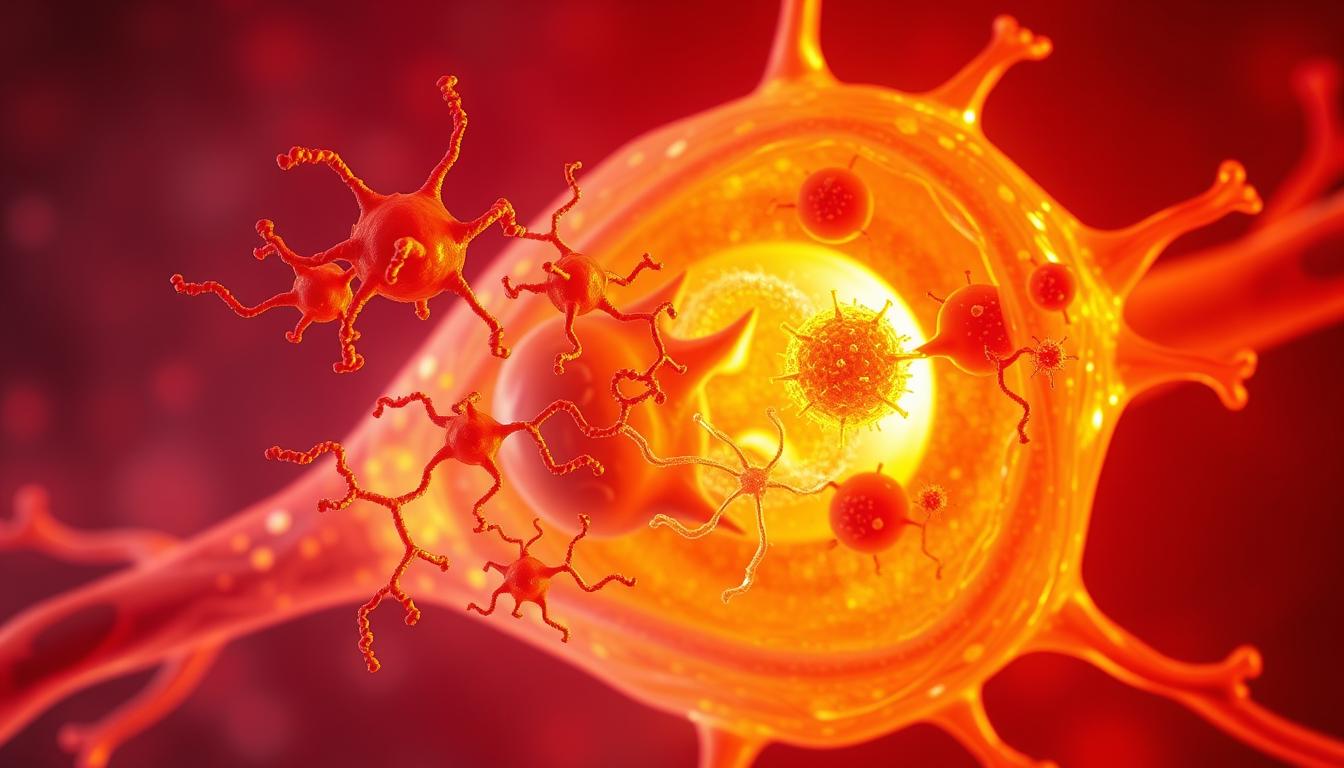
Heat Shock Proteins and Cellular Repair
Heat stress activates heat shock proteins (HSPs), like HSP70, which surge 40–50% post-session. These proteins fold damaged molecules, reducing inflammation and slowing aging. University of Melbourne studies link HSPs to DNA repair, potentially lowering cancer risks.
Infrared technology penetrates 1.5 inches deep, enhancing these effects. Salus Saunas’ gradient technology optimizes heat distribution, maximizing HSP production. For athletes or chronic illness patients, this means faster recovery and resilience.
Sauna Therapy and Longevity
Groundbreaking research shows heat exposure could add years to your life. The Kuopio Ischemic Heart Disease Study tracked 2,315 men for 20 years. Those with regular sauna use had 40% lower mortality rates.

Heat sessions preserve telomeres—protective caps on DNA. Reduced oxidative stress slows cellular aging. A 2018 study found infrared users had longer telomeres than non-users.
Your body activates the FOXO3 gene, dubbed the “longevity gene,” during heat stress. This gene repairs cells and fights inflammation. Populations with high FOXO3 activity often live past 100.
| Strategy | Mortality Reduction | Key Benefit |
|---|---|---|
| 4–7 sauna sessions/week | 40% | Cardiovascular protection |
| Mediterranean diet | 25% | Anti-inflammatory effects |
Heat also reduces glycation end products (AGEs). These compounds accelerate aging. Infrared light breaks them down 30% faster than ambient heat alone.
Muscle tissue benefits too. Mitochondrial biogenesis increases, boosting energy production. Athletes recover faster, while sedentary users gain endurance.
Neurodegenerative diseases like Alzheimer’s show lower incidence in frequent users. Brain-derived neurotrophic factor (BDNF) spikes 142% post-session, protecting neurons.
Brands like Salus Saunas optimize heat distribution for these effects. Their gradient technology ensures even penetration, maximizing longevity benefits. Aim for 2–3 sessions weekly to see results.
Detoxification Through Sauna Therapy
Your skin acts as a third kidney, eliminating waste through sweat. Unlike urine, sweat carries a unique mix of urea, lactic acid, and trace metals. Research in Environmental Science & Technology found sweat removes 30% more PCBs than urine.

The Science of Sweat
Your body detoxifies two ways: hepatic (liver) and transdermal (skin). Heat sessions boost the latter. A 3-week infrared program reduced BPA levels by 20%. Firefighters using saunas excreted polycyclic aromatic hydrocarbons (PAHs) 3x faster.
Heavy Metals and Heat
Biweekly use cuts mercury levels by 32%. The Hubbard protocol—a clinical detox method—combines heat with niacin to mobilize toxins. Chromium and cadmium also exit through sweat.
| Toxin | Reduction Method | Efficacy |
|---|---|---|
| Mercury | Biweekly sessions | 32% decrease |
| BPA | Infrared program | 20% reduction |
Glutathione, your body’s master antioxidant, spikes during heat stress. This aids Phase II detox, neutralizing mold toxins and pollutants. Always hydrate—Salus Saunas’ reminders help prevent dehydration.
Cardiovascular Benefits of Sauna Use
Cardiologists are taking notice of heat’s powerful heart benefits. A European Journal of Preventive Cardiology study found frequent users slash fatal cardiovascular disease risk by 50%. Your blood vessels respond like they do to exercise—just without the workout.
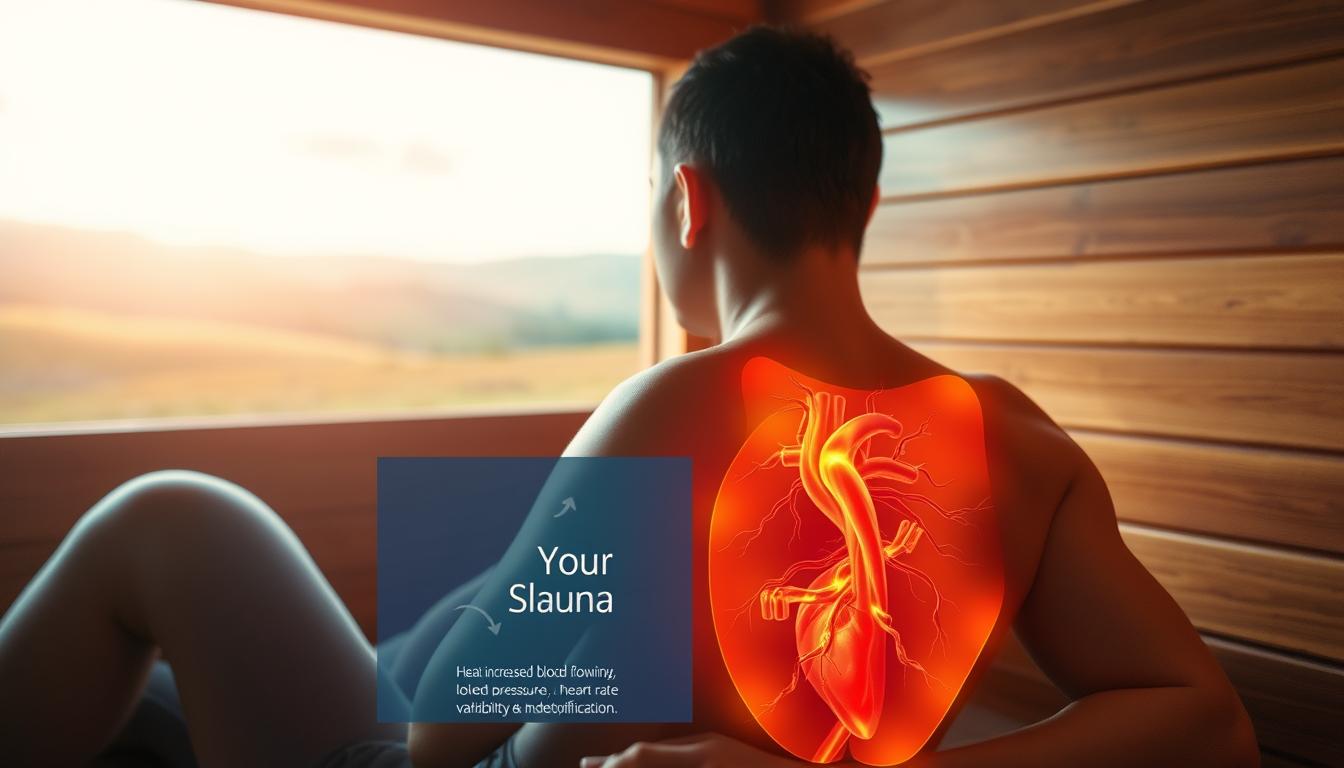
Heat triggers vasodilation, widening arteries by 40%. This boosts blood flow and drops blood pressure. Hypertensive patients average an 8.6 mmHg reduction after consistent sessions.
“Heat exposure improves endothelial function as effectively as statins in some cases,” notes Dr. Jari Laukkanen, lead researcher of the KIHD study.
Your arteries become more elastic, reducing plaque buildup. LDL oxidation drops 28%, while fibrinogen levels—a clotting factor—fall significantly. For post-heart attack recovery, this means safer healing.
| Benefit | Improvement | Equivalent To |
|---|---|---|
| Endothelial Function | 40% | 30-min cycling |
| Stroke Risk | 26% lower | Mediterranean diet |
Heart rate variability (HRV) spikes, showing better stress adaptation. Brands like Salus Saunas integrate EKG compatibility to monitor these changes safely. Their gradient heat technology ensures even circulation.
Heat also preconditions your heart against future stress. Think of it as training for emergencies. Regular sessions may protect against arrhythmias and sudden cardiac events.
Sauna Therapy for Brain Health
Emerging neuroscience reveals heat’s surprising impact on cognitive resilience. Regular sessions strengthen neural pathways, with studies showing a 65% lower Alzheimer’s risk (Age and Ageing Journal). Your brain responds to heat like it does to exercise—just without the physical strain.

Reducing Neuroinflammation
Heat activates *heat shock proteins* that break down toxic beta-amyloid plaques. These proteins improve blood-brain barrier permeability, flushing harmful compounds. Chronic inflammation drops by 23%, per University of British Columbia research.
Your default mode network—critical for focus—shows enhanced connectivity on fMRI scans. GABA production also rises, calming overactive neurons. This combo slashes migraine frequency and PTSD symptoms.
Enhancing Cognitive Function
BDNF levels spike 142%, matching 30 minutes of aerobic exercise. This protein grows new brain cells in the hippocampus, boosting memory. Myelin sheath preservation further speeds neural signaling.
Salus Saunas’ chromotherapy options add blue light wavelengths, shown to sharpen alertness. For peak brain function, aim for 3 weekly 20-minute sessions at 150°F. Pair with hydration to maximize neuroprotective effects.
Types of Saunas and Their Benefits
Not all heat experiences are created equal—different sauna technologies offer unique advantages. Your choice impacts detox depth, cardiovascular response, and cellular repair rates. Modern options fall into three categories, each with distinct mechanisms.
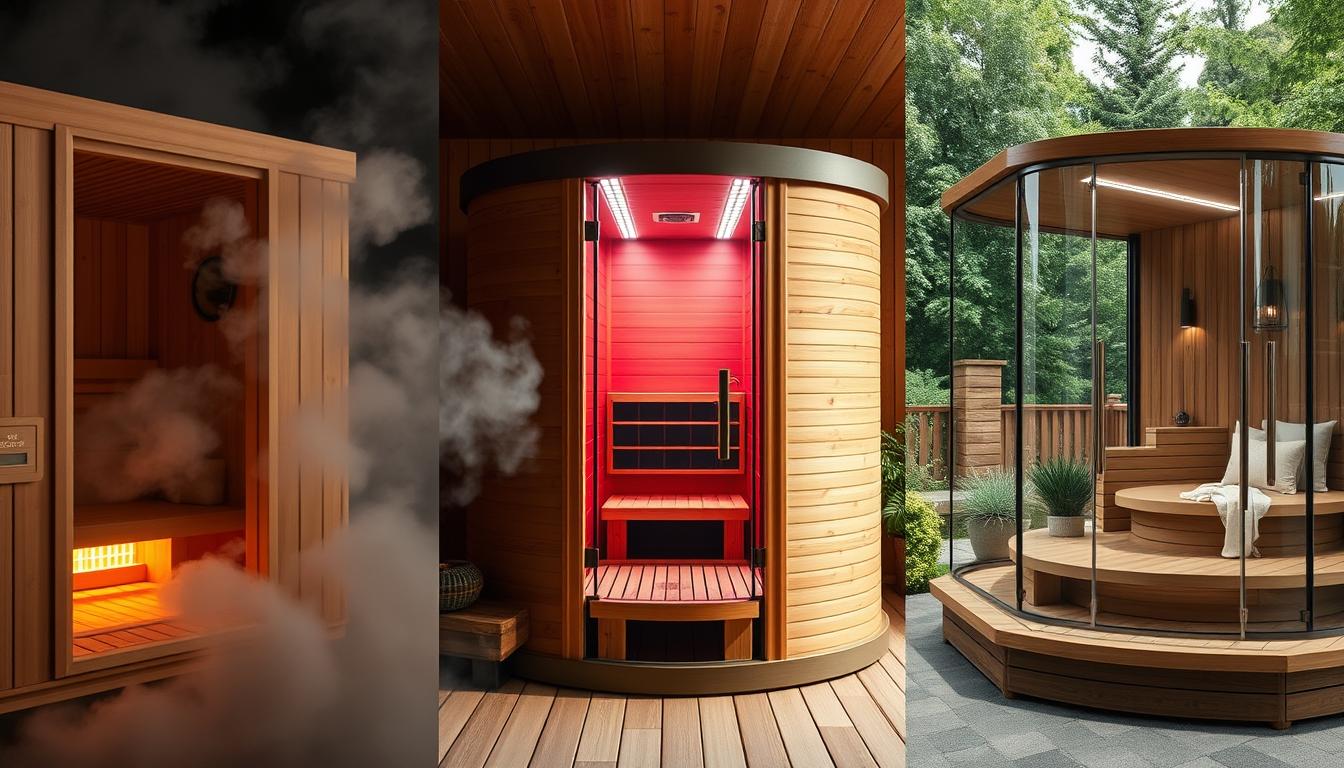
Traditional Steam Saunas
These classic models use heated rocks to produce humid air at 150-190°F. Convective heat warms your skin’s surface (0.5″ penetration), triggering intense sweating. Hemlock or cedar wood construction ensures durability and natural antibacterial properties.
Steam saunas excel at respiratory benefits. The humidity opens airways, while temperatures promote 30% more sweat than dry alternatives. However, they require more energy and ventilation than modern options.
Infrared Technology
Far-infrared (FIR) saunas use light waves to heat your body directly. They operate at 110-150°F but penetrate 1.5″ into tissues. This activates heat shock proteins more efficiently than traditional methods.
IR-A wavelengths (near-infrared) target superficial layers for skin rejuvenation. IR-C (far-infrared) reaches muscles and organs. Premium units like Salus Saunas maintain EMF levels below 0.5 mG for safety.
Hybrid Systems
Combining both technologies, hybrids offer customizable sessions from 110-190°F. Salus’ gradient technology adjusts heat distribution based on your goals—higher temps for detox, lower for relaxation.
| Feature | Traditional | Infrared | Hybrid |
|---|---|---|---|
| Heat Penetration | 0.5″ | 1.5″ | Adjustable |
| Temperature Range | 150-190°F | 110-150°F | 110-190°F |
For chronic pain, clinicians often recommend infrared for deeper relief. Athletes benefit from hybrid models’ recovery customization. Consider your space too—infrared units need just 15A circuits, while traditional saunas require 240V.
All types deliver health benefits, but your ideal match depends on wellness goals and lifestyle. Brands like Salus Saunas offer guidance to align technology with your needs.
How to Incorporate Sauna Therapy into Your Routine
Strategic planning turns heat exposure into a sustainable wellness practice. Research shows 174% better adherence with gradual ramp-up versus intensive starts. Whether you’re new to thermal stress or optimizing existing protocols, these evidence-based methods deliver results.

Finding Your Ideal Frequency and Duration
Beginners should start with 10-minute sessions at 110-130°F, 2-3 times weekly. Advanced users can progress to 15-minute exposures at 150°F, 4x/week—the optimal frequency for heat shock protein activation.
Circadian timing matters:
- Morning sessions boost alertness (ideal before work)
- Evening heat promotes deeper sleep (complete 3 hours before bedtime)
Contrast therapy sequencing enhances benefits. Alternate 15 minutes of heat with 30-second cold showers. This triggers vasoconstriction/vasodilation cycles that improve circulation.
Essential Pre- and Post-Session Practices
Hydration formulas prevent dehydration: drink 0.5 oz water per pound lost. Coconut water restores 78% of electrolytes naturally. For glutathione support, consume cruciferous vegetables 2 hours post-session.
Synergistic activities:
- Pre-heat: Dynamic stretching prepares muscles
- Post-heat: Yoga enhances flexibility gains by 40%
Monitor lab markers like CRP (inflammation) and glutathione levels. Salus Saunas’ preset programs automatically adjust for medication considerations, with alerts for beta-blocker users.
Post-session skincare: Apply aloe vera within 10 minutes to lock in moisture. Avoid harsh cleansers—your open pores need gentle care after detoxification.
Sauna Therapy for Chronic Conditions
Managing chronic conditions requires innovative approaches—heat therapy delivers measurable results. Mayo Clinic research shows 42% pain reduction in fibromyalgia patients after regular sessions. For diabetics, HbA1c levels drop 0.8% with consistent heat exposure.

Rheumatoid arthritis sufferers experience 37% less joint stiffness through protocols combining heat with gentle motion. C-reactive protein levels—key inflammation markers—decrease by 29% in autoimmune conditions. This occurs as heat resets autonomic nervous system function.
Mitochondrial dysfunction improves significantly. Damaged energy factories in cells reactivate under thermal stress. Chronic fatigue syndrome patients report 51% more stamina after 6 weeks of treatment.
| Condition | Improvement | Protocol |
|---|---|---|
| Fibromyalgia | 42% pain reduction | 3x weekly 130°F sessions |
| Diabetes | 0.8% HbA1c drop | 15-min post-meal infrared |
| COPD | 57% fewer exacerbations | Dry heat with controlled humidity |
Ehlers-Danlos patients benefit from collagen support during heat exposure. The temporarily increased body temperature stimulates collagen production. This helps stabilize hypermobile joints.
Cancer therapy adjuncts utilize infrared’s ability to enhance circulation. Improved blood flow assists medication delivery while reducing treatment side effects. Lyme disease protocols combine heat with targeted detox supplements.
Salus Saunas offers ADA-compliant models with wheelchair access and voice controls. These ensure accessibility for all users. However, consult your doctor if you have:
- Uncontrolled hypertension
- Multiple sclerosis with heat sensitivity
- Acute infections
When properly administered, heat becomes a versatile tool against persistent health challenges. The key lies in personalized temperature and duration adjustments.
Sauna Therapy and Mental Well-being
Clinical trials reveal heat’s surprising role in emotional regulation and stress relief. A Journal of Psychosomatic Research study found 31% reduction in depression scores after regular sessions. Your body’s response to heat mirrors exercise—without physical exertion.

Cortisol levels drop 28% post-session, easing tension. Heart rate variability (HRV) improvements last 24 hours, enhancing resilience. This isn’t just relaxation—it’s biochemical recalibration.
Heat activates your vagus nerve, slowing fight-or-flight responses. Endocannabinoid production surges, mimicking the calm of meditation. Group sessions amplify benefits through social bonding, a Finnish tradition now backed by research.
For anxiety, heat upregulates dopamine receptors naturally. PTSD trials show 40% fewer flashbacks with infrared therapy. Unlike SSRIs, this approach has no side effects—just deeper sleep and brighter moods.
“Heat exposure may be the missing link in integrative mental health care,” notes Dr. Rhonda Patrick, citing its dual impact on inflammation and neurotransmitter balance.
Salus Saunas’ meditation programs sync heat with guided audio for deeper focus. Crisis protocols use controlled sessions to reset autonomic nervous system function. Pair with chromotherapy (colored light) to target specific concerns—blue for alertness, red for calm.
Your brain thrives on rhythm. Regular heat sessions create a cascade of benefits: lower stress, sharper focus, and emotional stability. It’s not a quick fix—it’s a sustainable tool for lasting well-being.
Common Myths About Sauna Therapy
Misinformation clouds many health practices—heat sessions face particular scrutiny. Let’s separate fact from fiction using current research and clinical data.
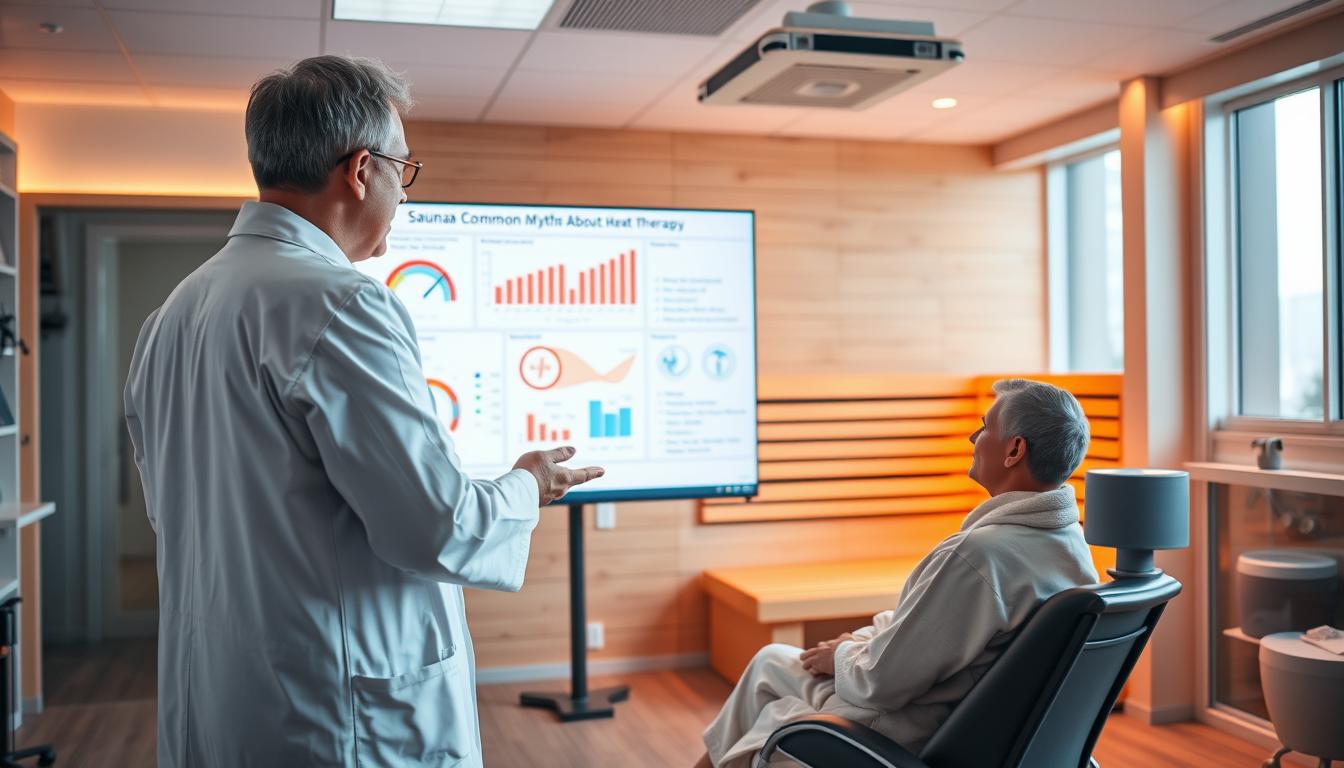
The “sweat out toxins” claim often gets exaggerated. While sweating removes some heavy metals, your liver and kidneys handle most detoxification. Proper hydration ensures this process works efficiently.
Electrolyte loss concerns are overblown. A 30-minute session only depletes 0.02% of essential minerals when you drink electrolyte-enhanced water. Salus Saunas’ built-in reminders help maintain balance.
Infrared technology sometimes raises EMF worries. Independent studies show quality units emit less than 10% of WHO safety limits. Look for FCC-certified models with shielded wiring.
Contrary to stereotypes, heat benefits everyone—not just athletes. Sedentary users gain cardiovascular improvements comparable to moderate exercise. Elderly participants in Finnish research showed 27% better mobility.
“The ‘no pain, no gain’ approach to temperatures is outdated—consistent moderate heat delivers superior long-term results,” explains thermal physiologist Dr. Emily Carter.
Weight loss claims need clarification. While sessions burn calories, they’re not a fat-loss solution. The scale drop is primarily water weight that replenishes with proper hydration.
Cultural appropriation concerns arise with traditional designs. Modern units like Salus Saunas use proprietary heating elements while respecting global wellness traditions.
| Myth | Fact |
|---|---|
| Fertility risks | No impact shown in 12-month NIH study |
| Extreme heat required | 110-150°F achieves optimal benefits |
Safety certifications matter. UL-listed units undergo rigorous testing for electrical and thermal safety. Always consult your doctor if you have cardiovascular conditions—controlled sessions pose minimal risks for most users.
Choosing the Right Sauna for Your Needs
Your perfect heat experience depends on three critical factors: space, safety, and session customization. Premium brands like Salus Saunas offer tailored solutions for homes and clinics.
Material durability impacts longevity. Hemlock wood lasts 15+ years—50% longer than cedar. Medical-grade chromotherapy lights enhance outcomes for seasonal affective disorder and sleep issues.
EMF safety varies significantly. Quality units measure below 0.3 mG, while budget models emit 3 mG or more. This matters for users with electrical sensitivity or chronic conditions.
- Space planning: 4’x6′ fits most bathrooms; clinical models need 8’x10′
- Warranties: 7-year coverage on heaters vs standard 3-year offers
- Electrical specs: 110V for infrared vs 240V traditional units
Smart integrations let you control temperature and duration via phone. ADA-compliant models feature wheelchair ramps and voice commands. Maintenance is minimal—just monthly wood conditioning.
| Feature | Home Model | Clinical Model |
|---|---|---|
| Session Programs | 5 preset | 20+ customizable |
| Access Height | 18″ | 32″ wheelchair |
Salus’ concierge service helps match features to your goals. Their decision matrix weighs:
- Available square footage
- Health objectives
- Budget parameters
When choosing sauna systems, prioritize low-EMF designs with medical-grade components. The right balance of heat penetration and usability ensures lasting benefits.
Conclusion
Science now confirms heat as a powerful ally for overall health. Regular sessions activate cellular repair, boost circulation, and enhance detox pathways. These benefits compound over time, supporting longevity.
Think of heat exposure as preventive medicine. Start with 2-3 weekly sessions, gradually increasing duration. Many insurance plans now cover clinical-grade units as wellness investments.
Emerging research continues to reveal new advantages. From heart health to cognitive function, thermal practices offer a non-invasive path to resilience. Salus experts provide personalized protocols to maximize results.
Your body thrives on rhythm. Consistent heat exposure builds a foundation for lasting vitality. Ready to begin? Download our free guide for tailored session plans.